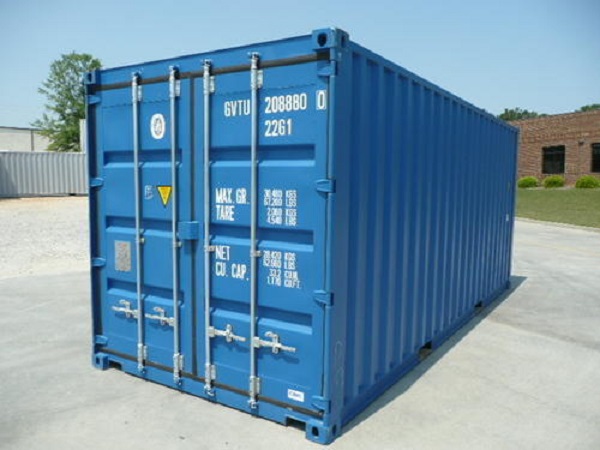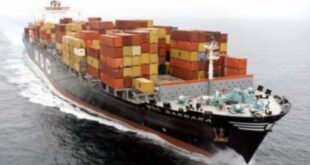Not many people involved in the shipping business understand that shipping containers must meet certain international standards. However, this week’s edition of Shippers Guide is dedicated to container standards and procedures for inspection. Shippers Guide is the learning page of MMS Plus. Here we answer the five W’s and H of several issues in the shipping industry.
Container Safety Convention (CSC)
In general, any container used for international transport must have a valid safety approval plate or CSC plate“. CSC is the abbreviation for Container Safety Convention.
In order to avoid damage in transit, the container should, however, be properly inspected before and after packing. The following inspections are recommended:

Outside of container:
· No holes or cracks in walls or roof.
· Doors operate properly.
· Closing devices operate properly.
· No adhesive labels from the previous cargo, e.g. IMO placards.
· For flatracks: stanchions (if ordered) are complete and correctly fitted. For 40′ flatracks: all lashing belts are present.
· For open-top containers: roof bows are complete and correctly fitted.
· For open-top containers: tarpaulins are undamaged and fit properly; ends of tarpaulin ropes are undamaged; all roof eyes are present.
· For hard-top containers: roof is undamaged, roof locking mechanism fits and operates properly.
Inside of container:
· Container is watertight. Test method: enter the container, close both doors tightly and look for incoming light (e.g. through cracks, holes, door gaskets etc.).
· Container interior is absolutely dry. (Wipe up any condensation or white frost in order to avoid corrosion and moisture damage of the cargo.)
· Container is clean, free of cargo residues and neutral in odor.
· No nails or other protrusions which could damage the cargo.
· The container is packed appropriately for the cargo, anticipated transit stresses and the container.
· A copy of the packing list is placed in a highly visible location inside the container (for Customs inspections and the like).
· When lumber is used as a packaging material etc., it may, under certain circumstances, be necessary to comply with the quarantine regulations of the country of destination and a phytosanitary certificate or proof that the lumber has been treated may have to be placed conspicuously in the container. Information may be obtained from the phytosanitary authorities of the countries concerned.
· The doors and, if applicable, roof covering have been carefully closed. (Strong steel wire cables, padlocks or high security seals provide protection from cargo theft.)
· Closures are secured with metal and other seals in order to reduce the risk of theft (record the seal number).
· For open-top containers: tarpaulins are correctly fitted and tarpaulin ropes correctly threaded (Customs-approved closure).
· If the cargo is covered with tarpaulins in special containers: the tarpaulins are securely fastened.
· Old adhesive labels have been removed.
· For refrigerated containers with refrigeration unit and heatable tank containers: the correct temperature has been set. For refrigerated containers, the temperature recorder is running and the temperature is displayed.
What is a CSC plate?
A CSC plate refers to the ‘Container Safety Convention’. In 1972 at a joint conference with UN and (International Maritime Organization) adopted the convention requirements as drafted by the IMO and the Economic Commission for Europe. Put simply, this convention outlines the regulations for testing, inspections, approval and maintenance of shipping containers as well as the structural safety requirements and tests.
In very basic terms, a CSC plate is a bit like and MOT for a car (but for a shipping container). It confirms that a container has been thoroughly inspected by a competent professional, and is considered safe for use for a set period of time (as decided by the inspector). At the point of expiry the container will need a fresh check over and assuming the container is suitable it will be given a CSC update, where a fresh CSC expiry date is added onto the container.
The CSC plate is fixed onto the container by the factory who has had its container design thoroughly tested out to meet all international standards. It is then the responsibility of the container owner to ensure the containers are periodically examined and kept up to standard. So, container owners or major shipping lines and leasing companies employ the use of container yards who have competent inspectors for the assessment and repair of shipping containers
In the UK there are 2 bodies that can issue qualifications to container inspectors, Bureau Veritas and IICL (International Institute of Container Lessors). Any would need to undertake exams to show the bodies their basic knowledge, and will commonly be required to have various reference books to hand which are issued and updated by the authority.
Any qualified container inspector will have some form of photo ID with his or her registration number on that can be checked with the issuing body.
Container owners then ask the container yard and their nominated inspectors to check a container, advise us of any repair costs required to bring it up to standard and then to re-certify the container for a period of time that the inspector is happy with (Typically 6 or 12 months for used equipment, nearly new equipment some inspectors may offer up to 30 months maximum)
Subsequently, a sticker is attached to the container showing the CSC expiry date that will sit atop the original shipping container expiry date
What is ACEP approval and what does it mean?
Major shipping lines and a couple of leasing companies also run an ‘ACEP’ (Accredited Continuous Examination Protocol) system. This is essentially the same checking process that is undertaken when updating a CSC expiry date – but instead of putting a new sticker on the container every time it comes into a depot, they simply ask their depot to examine their containers every time.
In very basic terms, if you own your own boat, and if you own your own fleet of shipping containers that travel on your boat, you are not legally obliged to maintain any specific repair standards by maritime law (although shipping lines do appreciate that without good containers they wont’ have customers for very long!)
The examination procedure is exactly the same and the same depots repair a container with an ACEP approval. A Container with an ACEP number will not have an expiry date. Officially if you buy a CSC plated container that comes with an ACEP plate it is still good for export use, the original owner of the container is essentially saying ‘we are selling this container to you in a seaworthy condition, and you are allowed to ship it under our ACEP number / approval reference for a reasonable period after purchase (A reasonable period usually termed as 6 months).
There is a little ambiguity with ACEP plates and the service you ship on. To our knowledge all major shipping lines will accept shipping containers with an ACEP approval. In reality the same inspections and repair processes are undertaken and we have not yet seen or known of a customer unable to ship a container with ACEP approval.
However much like an MOT for a car, a CSC plate or ACEP approval is no guarantee of suitability (or seaworthiness) If the container has left a depot and is then damaged before arriving at a port – a port or depot may choose to turn it away at any time.
One important point to mention, if the CSC plate has an expiry date which is nearly expired or expired you will likely require a new CSC exam before you can export this container. We have come across people on eBay and similar sites selling a container as CSC plated just because it has a CSC plate on it (regardless of expiry). This is not correct and you can find yourself in a very sticky situation if you tried to export one of these containers without checking it carefully.
Some of the physical CSC plated may not show an expiry date as they have to date been run under the ACEP scheme. In this instance we recommend presuming that the container is not in date for export use (much better to spend £200 getting it checked than £2000 when your container won’t ship or potentially a lot worse if it collapsed a container stack, shut a port and killed a couple of dock workers in the process).
Buying a CSC plated shipping container
For some export projects, it may make more sense to buy your own csc plated shipping container for your job.
Budgetshippingcontainers.co.uk offers the UK’s largest online range of shipping containers for sale with a nationwide network of storage and conversion yards and crane equipped delivery vehicles.
In Nigeria, most shipping lines sell these containers at varying prices ranging from $1,000 to $1200 for 20ft containers and $1300 to $1700 for 40ft.
 MMS PLUS NG – Maritime, Aviation, Business, Oil and Gas News Online Newspaper with coverage in Maritime, Oil and Gas, Aviation, Power and Energy as well as Financial News
MMS PLUS NG – Maritime, Aviation, Business, Oil and Gas News Online Newspaper with coverage in Maritime, Oil and Gas, Aviation, Power and Energy as well as Financial News










